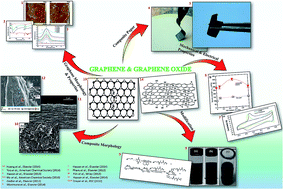Nanocomposites of graphene/polymers: a review
Abstract
This paper essentially reviews the types of graphene-based nanofillers and the fabrication of graphene/polymer nanocomposites. Routes to produce graphene materials, along with the methods and modifications used to efficiently disperse graphene nanofillers within the polymer matrices are discussed. In addition, the mechanical properties, morphological, structural, electrical conductivities, electrochemical activities, thermal stabilities, and gas barrier properties are evaluated, along with the direct relationships of these properties with the graphene–polymer interactions and their dispersion in the polymer matrix. Finally, a brief summary of the practical applications of polymeric-graphene materials along with the current trends in the field is presented to progressively show future prospects for the development of these materials.


 Please wait while we load your content...
Please wait while we load your content...